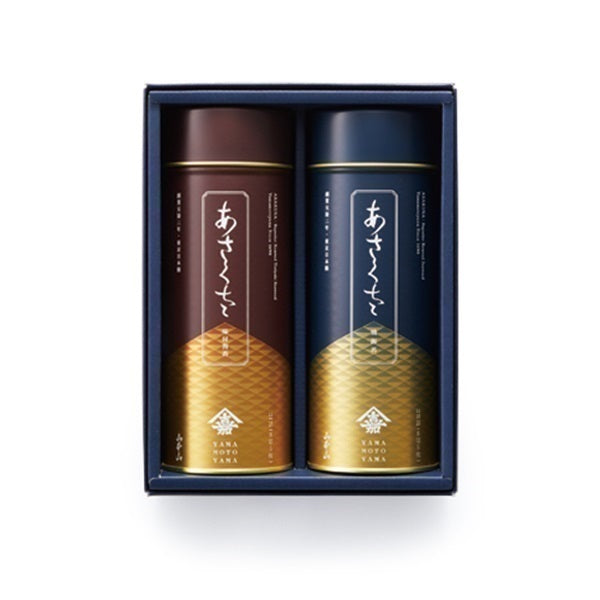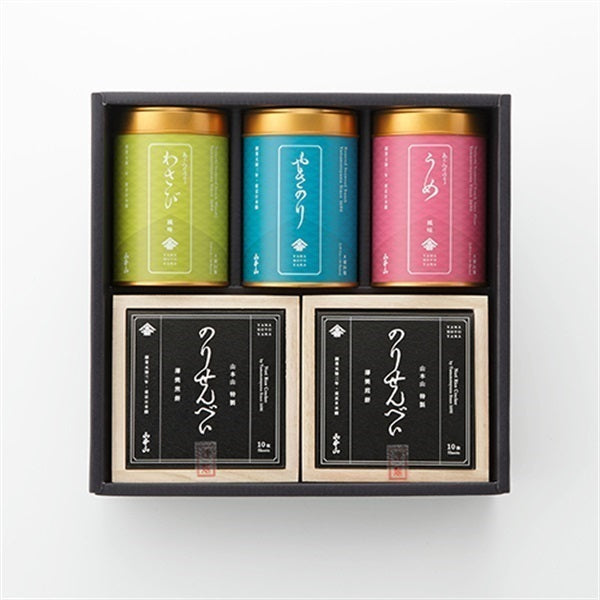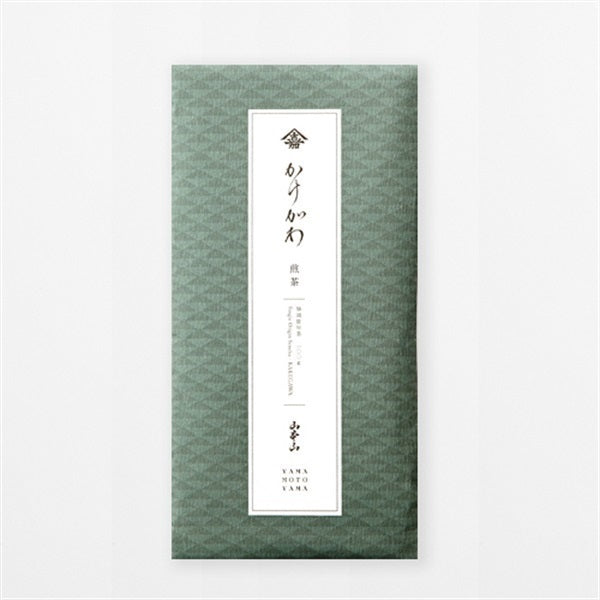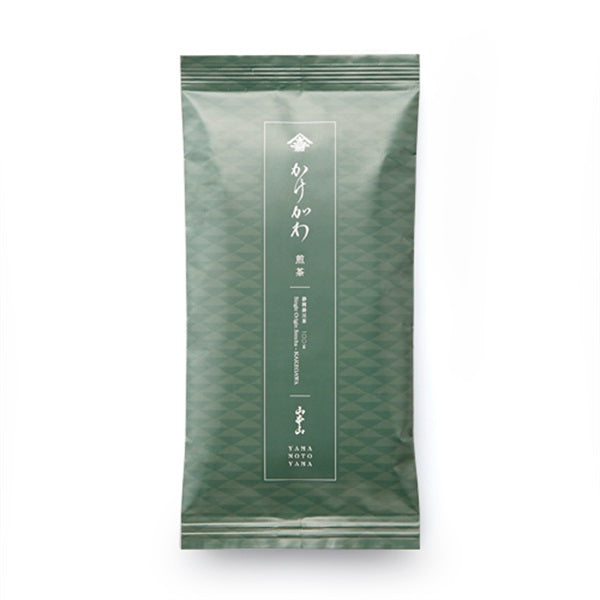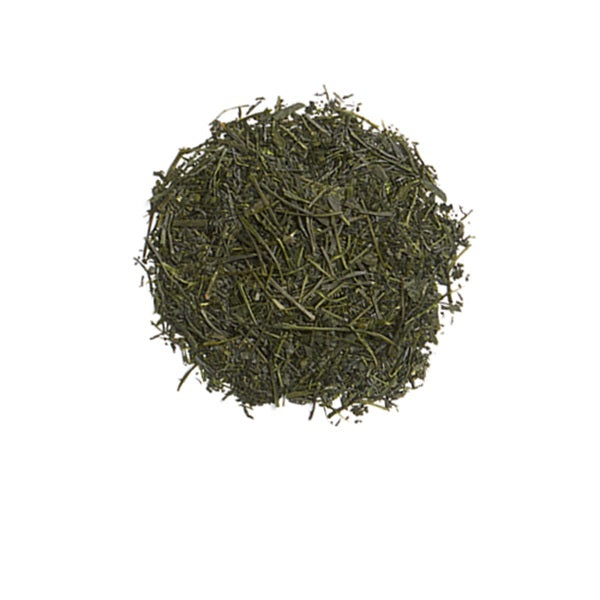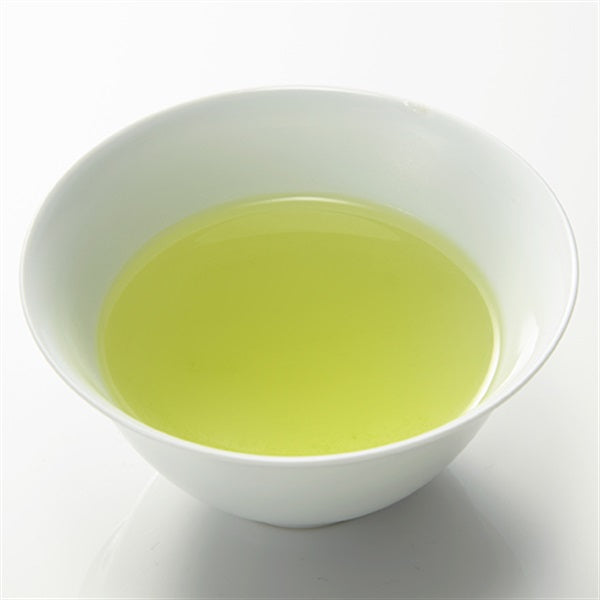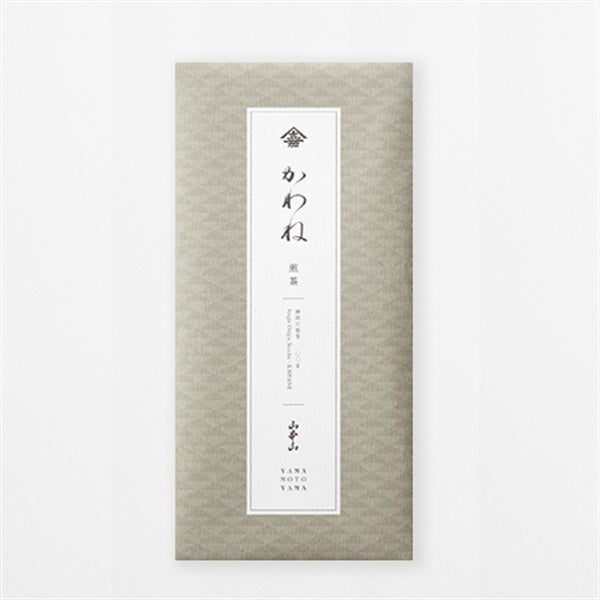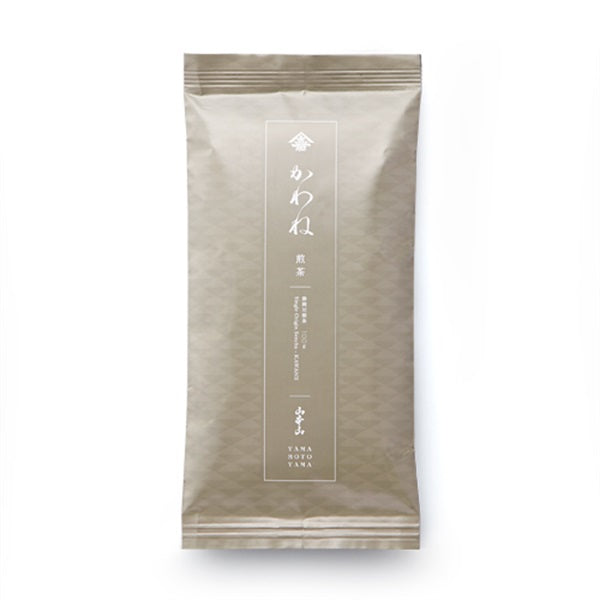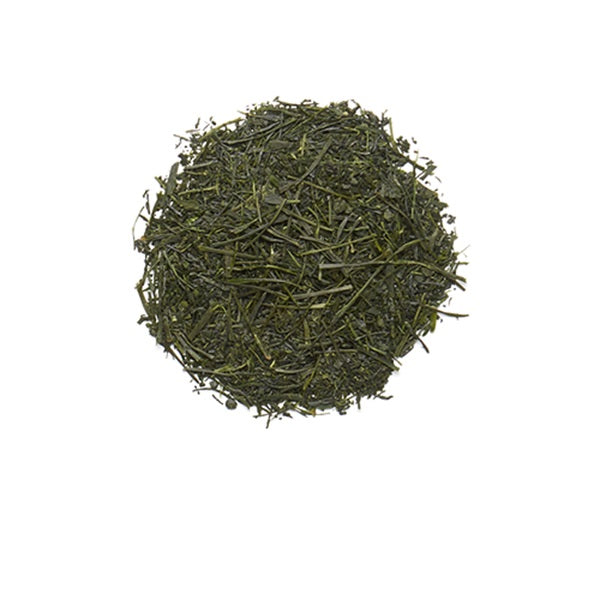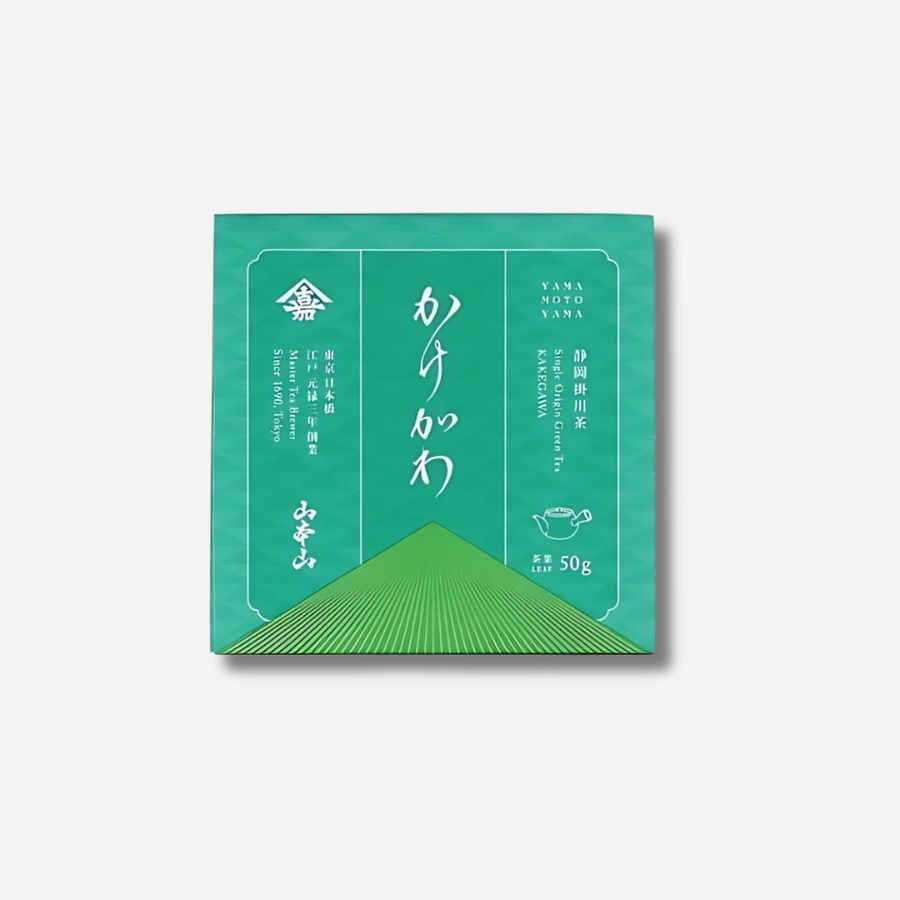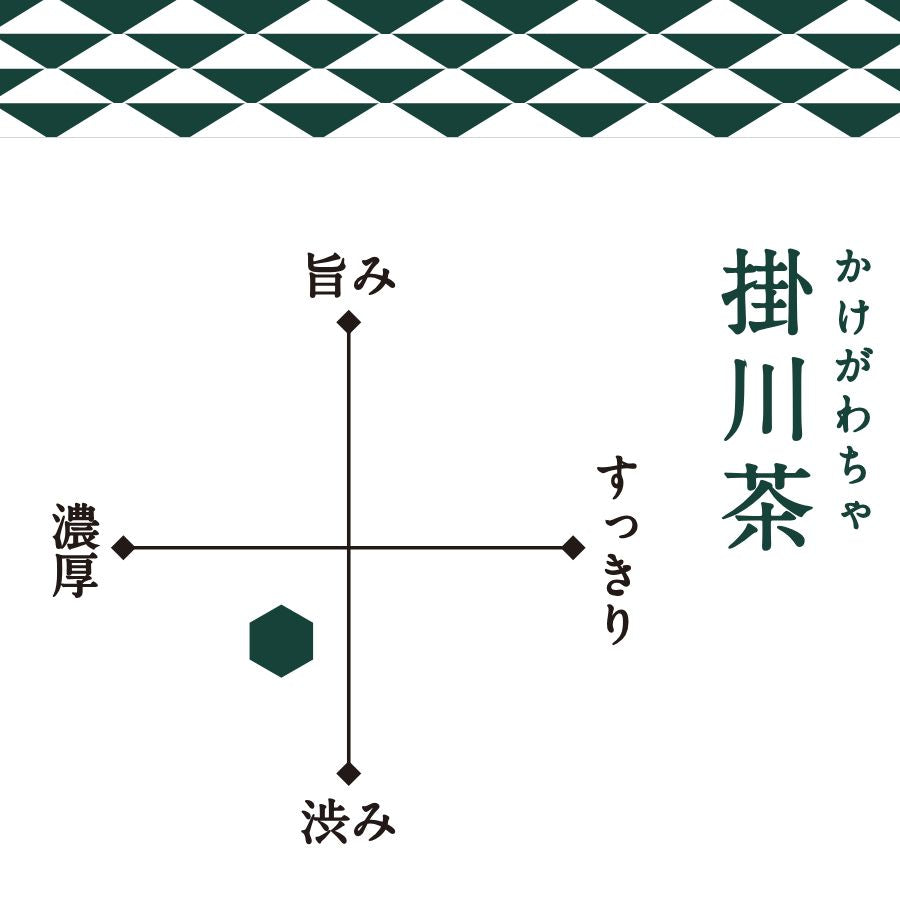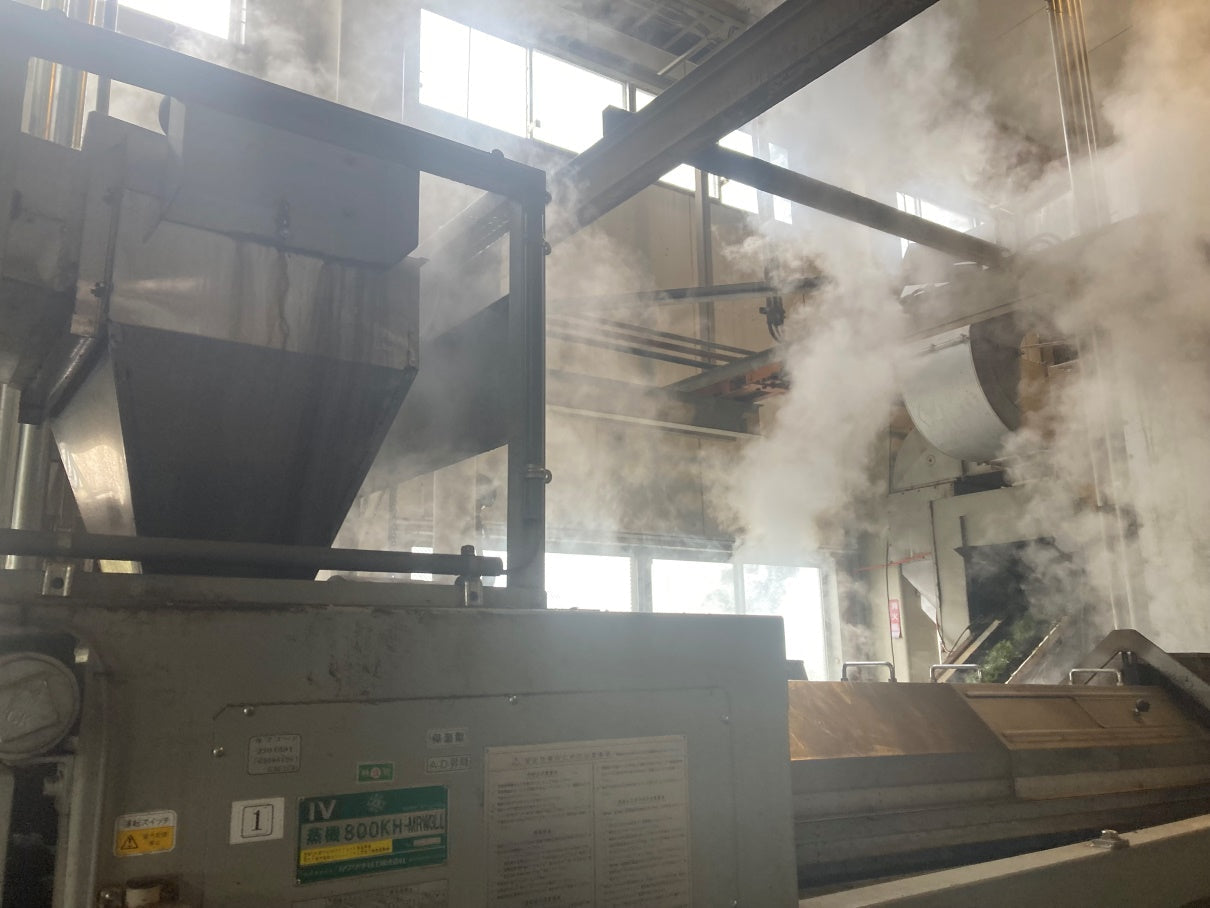
Visiting Shizuoka, a tea-producing region - Close-up! Behind the scenes of crude tea processing, getting to the heart of tea leaves
Introduction
In the season of vibrant new greenery, we stepped into the crude tea processing factory, where the vitality of new tea and the skills of tea processing are alive and well.
How are the freshly picked tea leaves transformed by the hands of skilled artisans and the latest technology?
Filled with anticipation, we headed to the scene, closely following the excitement.

Acceptance and rigorous selection
The first thing that caught my eye was the sight of workers intently checking the large amounts of tea leaves moving along the conveyor belt.
Here, in addition to careful sorting by human eyes, samples are also checked mechanically using near-infrared light.

In just 90 seconds, a scientific analysis of the tea leaves is performed and data on their content, such as nitrogen, fiber and moisture content, is instantly calculated.
The selection criteria are clear: the higher the nitrogen content, the better the quality, and a high value is especially required for tea leaves grown under cover.
On the other hand, the less fiber there is, the softer and better the leaves are considered to be.The moisture content, which is important in the later processes, is also closely checked.
All these factors are evaluated comprehensively, and the tea leaves brought in are given a score to determine their grade.

Collaboration to improve quality: collaboration with farmers and technological advances
Because tea leaves with unique characteristics are brought in from various tea farmers, the factory also provides necessary guidance to improve quality.
GAP-certified farmers are required to meet stricter standards, and poor quality leaves are not mixed with good quality leaves, and leaves that fall far below the standards are not accepted.

By repeating this rigorous selection process, the quality of tea leaves throughout the region is gradually improving.
Furthermore, the ride-on plucking machines that have been increasingly introduced in recent years can adjust their height in millimeters, making it possible to harvest the tea leaves at a more uniform height than by hand, which also contributes greatly to stabilizing quality.
1. Air circulation and humidification
The tea leaf processing process is a race against time.
If freshly picked raw leaves are left as is, they will begin to ferment quickly, heat up, and lose their quality.
To prevent this and maintain freshness, humid air is sent to the tea leaves, and efforts are made to reduce the heat generated by respiration while maintaining the appropriate moisture content.

2. Steaming
The first step in tea leaf processing is steaming.
Fresh tea leaves that have just been picked begin to oxidize the moment they are picked, so in order to maintain their quality, they are steamed as quickly as possible to stop this oxidation.
This steaming process removes the green smell that is characteristic of raw leaves and softens the leaves, making it the first important step that determines the flavor of the tea.

900 kg of fresh leaves can be steamed in just one hour. This efficiency is remarkable, but it is by no means all mechanical.
For example, the day after it rains, the moisture content of the tea leaves is less than usual, which changes the natural conditions and makes it difficult for heat to penetrate evenly.
Therefore, the machinery is finely adjusted to ensure optimal steaming, taking into account not only the weather on the day, but also the weather conditions of the previous day.
3. Massage
The steamed new buds then go to the "rolling" process, which involves carefully rolling the tea leaves through four stages: rough rolling, rolling, medium rolling, and fine rolling.
Using different machines, craftsmen with extensive knowledge of tea determine the perfect timing for adjusting the steaming level, moisture content, rolling, etc.
To ensure that the tea leaves were processed evenly inside the mixer, we periodically visually checked the internal condition and made repeated fine adjustments based on the color of the rotating light, etc.
Temperature control during the rolling process is an extremely important factor that determines the quality of the tea.
In order to dry the moisture that has risen to the surface, there is a process called "middle kneading" in which hot air is applied while kneading.
During this process, hot air is blown into the tea leaves at a temperature exceeding 100°C. However, if the temperature of the tea leaves themselves exceeds 37°C, the chlorophyll that gives the leaves their vibrant green colour will be destroyed and the colour will change.

Therefore, through the delicate techniques of our artisans, the temperature of the tea leaves when they are actually rolled is adjusted to be around 36.5°C, which is close to human body temperature.
This is a masterful technique that requires years of experience, as the temperature of the hot air is fine-tuned to suit slight changes in natural conditions such as the moisture content of the leaves, the humidity of the day, and the weather of the previous day.

4. Drying
After the rolling process, the tea leaves move on to the drying stage.
Removing moisture thoroughly at this stage is extremely important in maintaining the quality of the tea.
If the tea leaves are not dried sufficiently, they will not be preserved properly and may lose quality, such as discoloration or flavor.
After this drying process, the original form of tea, "aracha", is finally completed.

5. Finishing and sorting
In the finishing process, a static electricity machine is used to carefully remove stems and other parts.
However, how much of the stems of first-grade tea, which is considered to be the most delicious, should be removed is not a simple mechanical task.
This is because these thin stems are rich in theanine, a flavor component, which gives tea a deep sweetness and mellow taste, and is an important factor in enriching the flavor.

On the other hand, however, if there are too many stems, the uniformity of the overall appearance of the tea leaves as a finished product can be compromised and the product may be deemed to be of inferior quality.
In this way, determining the very fine line between quality and yield is a moment that requires truly skilled techniques honed over many years of experience.

In recent years, some factories have introduced color sorting machines, which allow for more efficient and precise sorting, but ultimately, the decision of how many stems to leave and which to remove is still largely left to human eyes and years of experience.
This is due to the artisan's sensitivity to the delicate balance of flavors that cannot be quantified, as well as the impression that the final product will leave on the consumer.

In addition, if a large number of curled tea leaves are found during this sorting process, it is not simply a matter of appearance.
The presence of many beads suggests that the tea leaves have not been rolled sufficiently and that the moisture has not been removed evenly. This is a sign of insufficient rolling pressure, which can affect the aroma and quality of the tea.
When such a condition is discovered, it provides immediate feedback to the kneading process.
Rather than simply applying pressure, the rolling force is adjusted down to the millimeter, and the machine's rotation speed and pressure are also adjusted with great delicacy, while keeping in mind the condition of the tea leaves, the humidity of the day, and the final quality desired.
Even in today's world of advancing mechanization, the sense of the human hand, backed by years of experience, remains an important factor in determining the quality of tea.

summary
At the factory, where the new tea is in its prime season, the steaming process continues all night, and I heard that the heat can sometimes last until 6 a.m. the next morning. I could really sense how busy it is.
The excitement permeates the entire factory, the skilled craftsmen look intently, and the crude tea processing site is a meticulous fusion of the latest technology and traditions cultivated over many years.
What I saw there was how the cup of green tea we casually drink every day is supported by the passion of many people and the uninterrupted passing on of techniques.

